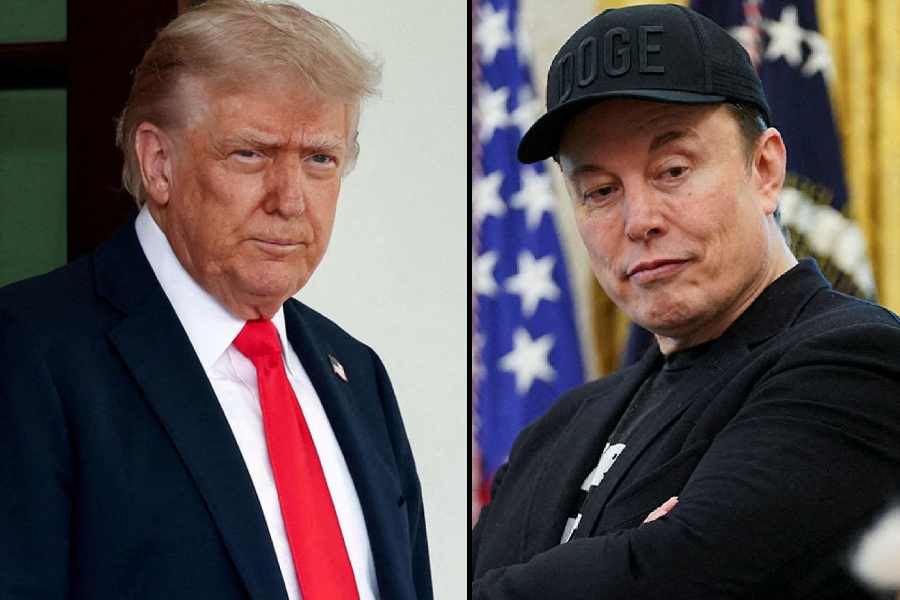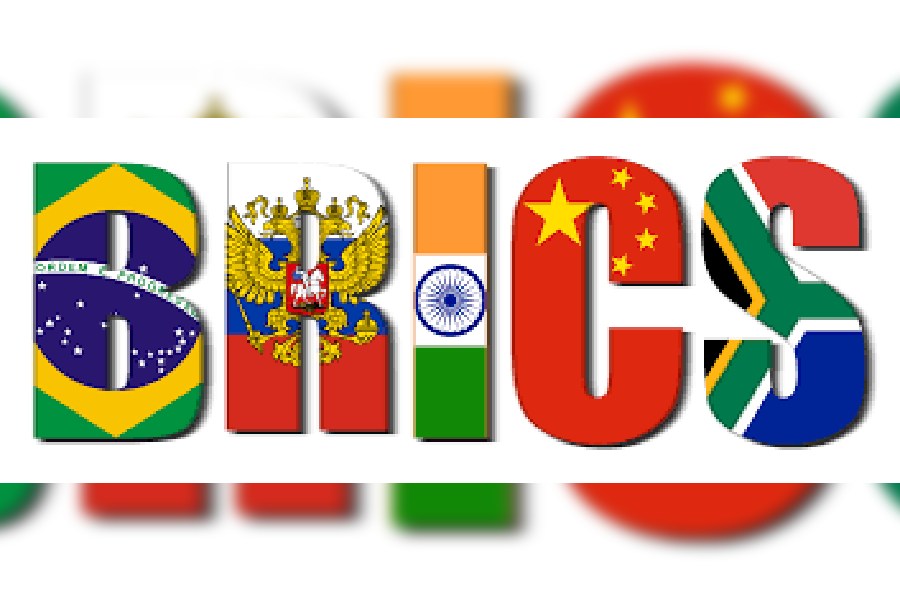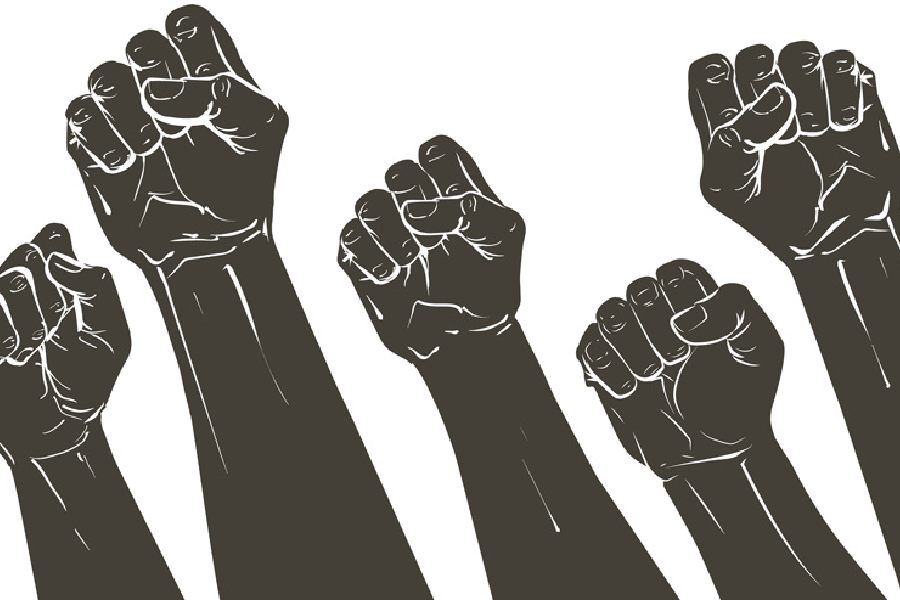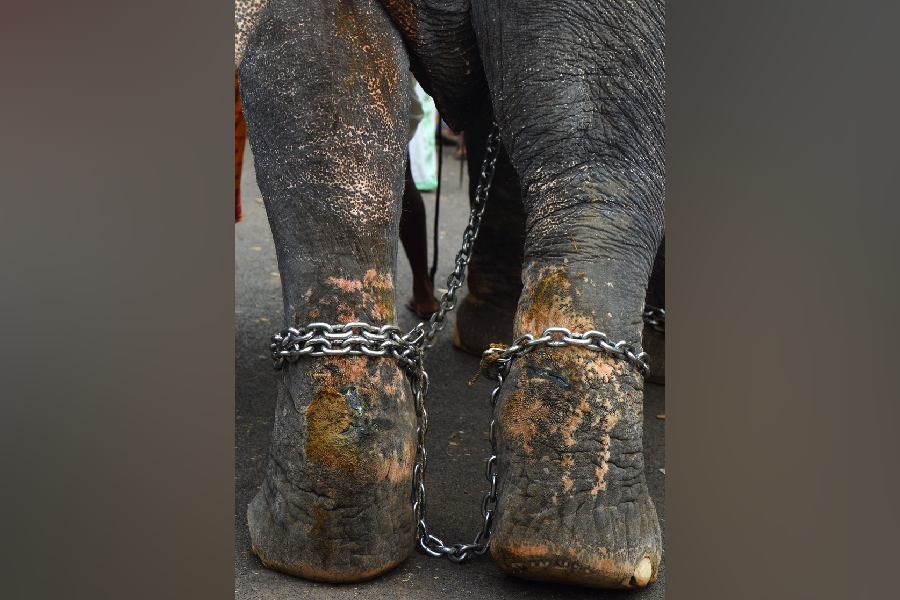 | GUEST COLUMN Anil Boro |
An ancient language rich in oral traditions, the Bodo language did not have a tradition of writing in the past. The language, like the other tribal languages of Assam and the Northeast, was confined to its spoken form until the second decade of the 20th century.
Even the Manipuri language, a language of the Sino-Tibetan family, saw literary efflorescence much earlier than the Bodo language, mainly due to the socio-cultural awakening that came to the Manipuri people through the connection with Bengal Vaishnavism. This socio-cultural awakening came to the Bodo people after the Brahma movement, launched by Kalicharan Brahma in the first decade of the 20th century.
In the second decade of the 20th century, the Christian missionaries, who came to the Bodo-speaking areas, published some books on religion, tales, rhymes, songs and grammar.
They wrote books mostly in English with examples in the Bodo language. The most noteworthy contributions were a book on grammar by Sidney Endle in 1884 and a monograph on the ethnic community in 1911. Anderson’s collection of folktales and rhymes (1895) is of seminal significance as it unfolded the hidden world of Bodo folklore to the world.
Bodo literature developed when the native speakers became conscious of the significance of writing culture. The religious and social reform movement, led by Gurudev Kalicharan Brahma in the first decade of the last century, created awareness among the people. The first Bodo magazine, Bibar, was published in 1920. A book on Bodo customary laws was published in 1915 by Habargaht Bodo Sammilani of Dudhnoi.
Two collections of Bodo poems by Modaram Brahma and Rupnath Brahma were published in 1923 and 1926. These are Bodoni Gudi Sibsa Arw Aroj (hymns and prayer songs of the Bodos) and Khonthai Methai (poems and lyrics).
 |
| Dancers perform at the Bodo Sahitya Sabha session being held at Telishal in Golaghat, on Thursday. Picture by UB Photos |
After Bibar, magazines like Zenthokha (1926), Hathorkhi Hala (1932) and Alongbar (1938) were published. Literature in various genres like essay, story and drama began to be written. Essays and critical writings on social issues were directed towards the necessity of social reform and social awareness. A good number of Bodo plays were written or adapted or translated from Bengali plays to be staged in the open-air theatre in remote villages.
Dramatists like Dwarendra Basumatary, Satish Basumatary, Umesh Chandra Mosahary, and Modaram Brahma wrote social, historical and fictitious plays to be performed in the open-air stage. These playwrights endeavoured to transform their plays into a strong instrument of social reform.
The modern period in Bodo literature coincides with the formation of the Bodo Sahitya Sabha in 1952. The search for identity assumed a concrete shape and the Bodo language was introduced as the medium of instruction in the primary stage in 1963 and in the secondary stage in 1968.
Gradually, the number of books published increased by leaps and bounds. Poets and authors devoted themselves to the writing of poems, short stories, novels, plays, biographies et al. Some authors took great interest in the collection and printing of oral tales, songs, and proverbs. The poets and authors of this period were greatly influenced by the literary traditions of Bengali and Axomiya literature.
The literature of the period is characterised by novelty, variety and search for new technique and mode of expression. Poets like Prasenjit Brahma, Jagadish Brahma, S. Brahma Chowdhury, Brajendra Kumar Brahma, Surath Narzary and others have immensely contributed to enrich the mainstream of modern Bodo poetry. Novelists like Chittaranjan Mosahary, M.R. Lahary, Dharanidhar Wary, Nandeswar Daimary, Kanteswar Brahma, and Katindra Swargiary and Bidyasagar Narzary have written novels on the social and cultural lives of the Bodos.
Among the Bodo short story writers, Ishan Moshahary, Nilkamal Brahma, M.R. Lahary, Dharani Wary, Prasenjit Brahma, Haribhusan Brahma, and Nandeswar Daimary, Gobindo Basumatary, Janil Brahma, Nabinmalla and Tiren Boro have written with a consciousness equally for social realism and the technique of story telling.
A galaxy of authors and essayists has also taken to writing essays and literary criticism. Among them Mohini Mohan Brahma, Ramdas Basumatary, Kamal Kr. Brahma, Madhu Ram Boro, M.R. Lahary, Brajendra Kr. Brahma, Lakhyeswar Brahma, Kameswar Brahma and others may be mentioned. New generation authors like Anil Boro, Bhupen Narzary, Swarna Prabha Chainary, Phukan Basumatary, Rakhao Basumatary, Dina Basumatary, Adaram and Sunil Phukan have contributed to Bodo literary criticism.
A group of enthusiastic authors have taken to writing children’s literature, travelogues and biographies in the Bodo language. The number of journals is also on the increase.
Dramatists like Kamal Kr. Brahma, Mongal Singh Hajowary, M.R. Lahary, and Janak Jhankar Narzary have written social and historical plays. The younger generation of authors and poets who started their career in the 1980s or 1990s has enriched contemporary Bodo literature. Poets like Aurobindo Uzir, Bijoy Baglary, Anju, Anil Boro, Soroj Bwismutiary, Bisnujyoti Kacahry and Nandeswar Boro have enriched modern Bodo poetry with innovative style and poetic language.
There are some poets and authors whose links with tradition are very strong and refreshing. Bihuram Boro, an organiser of Bodo Sahitya Sabha, has enriched Bodo poetry by rejuvenating narrative verses in the tradition of medieval kavya literature. We can compare the rich poetic quality explored by the poet with the medieval Vaishnavite kavya literature and with Milton’s Paradise Lost. It has all the richness and beauty of narrative verse. Other poets like Kamakhya Brahma Narzary, Soneswar Boro and Maheswar Narzary have also endeavoured to write narrative verse.
The age of Bodo written literature is hardly 90 years. In this short span, the literature written and published in the Bodo language has come up as an emerging force in the whole of Northeast India. The hope lies with the younger generation of poets and authors who have consciously taken to the art of writing poetry and other genres in Bodo language. Poets like Aurobindo Uzir, Anju Basumatary and Bijoy Bagalry have written the finest poems the language can boast of. In their poetry, there is a conscious attempt to experiment with poetic language and rhythm.
Many of the younger poets draw their inspiration from the Bodo people’s struggle for the assertion of linguistic and cultural identity. Aurobindo Uzir best exemplifies this in the following poem he wrote in 1985: “Where we start from is not their end, /Where they end is where we start from /The end that is endless. /The mwitha dembai plant becomes restless /To listen to the beat of kham /The Goddess of love comes flying /Through the stem of gangamala /Someone asked the solitude of the night: Who plays the serja? /The embankment of voice powder /Erected before the Siju plant.”
After Aurobindo and Anju, a new generation of poets and authors like Prafulla Hazoary, Uthrisar Sunil Phukan, Dhirjujyoti, Jwishri and Bhupendra Narayan have enriched contemporary Bodo poetry.
If contemporary Indian poetry in regional language is a conglomeration and fusion of multiple voices, the voice of Bodo poetry should definitely be considered one of them.
The driving force of inspiration for the writing of a majority of the authors and poets is the assertion of ethnic identity and the search for new literary technique and style.










